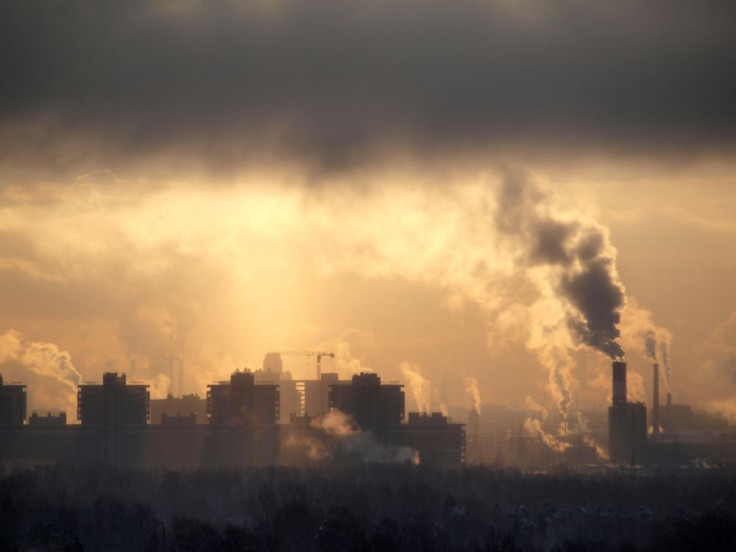Smog Tied To Heart Disease, Coronary Events: Could Air Pollution In China Pose An Even Bigger Threat?

New research shows that smog may have lasting consequences for cardiovascular health, fuelling the fear surrounding the air pollutants scientists say travel from East Asian factories to the U.S. West Coast every day.
Smog, or particulate matter air pollution, is generally thought to be the cause of about 3.2 million deaths each year. But the total indirect death count may be much higher, as the contaminated air also appears to increase the risk of heart disease, a new study published in the journal BMJ finds. “Our study suggests an association between long term exposure to particulate matter and incidence of coronary events,” Dr. Giulia Cesaroni and her colleagues at the Department of Epidemiology in Rome wrote. “These associations remained for exposure concentrations below the current European limits.”
Although the European Union’s (EU) particulate matter limit of 25 micrometers (μm) per cubic meter is higher than the U.S. limit of 12 μm/m3, the situation doesn’t look good for Americans either, as increases as small as 5 μm/m3 appear to be associated with a 13 percent higher risk of coronary events. The elevated risk was calculated with data from over 100,000 Europeans who were followed for an average of 11.5 years. During this period, more than 5,100 participants experienced adverse events like heart attack and angina, the chest pain associated with heart disease.
The study thus underscores the need to consider figures other than death toll when assessing the burden of smog and air pollution. In an accompanying editorial, Professors Michael Brauer and John Mancini of the University of British Columbia submit that such narrow models fail to illustrate the total impact. “As one of the largest studies on cardiac events in relation to air pollution, the finding that this association is not dominated by fatal events suggests that cardiovascular disease events attributable to particulate matter are underestimated in more traditional analyses that consider only deaths,” they wrote.
Smog, China, and the U.S. West Coast
That said, neither EU nor U.S. shortcomings in pollution control can hold a candle to those of Beijing, China, where the concentration of particulate matter exceeds 100 μm/m3 — 10 times the limit set by the World Health Organization (WHO) in its air quality guidelines. While many pollution studies have examined the situation in the Chinese capital, a University of California, Irvine paper from earlier this year stands out, as it shows how the contaminated air is spreading to neighboring countries and across the Pacific Ocean.
This means that several U.S. cities are experiencing poor air quality due to contaminants originating thousands of miles away. Los Angeles, for example, experiences about one extra day per year of smog exceeding federal limits. But are we simply paying for our own industrial practices?
“We’ve outsourced our manufacturing and much of our pollution, but some of it is blowing back across the Pacific to haunt us,” Steve Davis, earth system scientist and co-author of the study, told reporters. “Given the complaints about how Chinese pollution is corrupting other countries’ air, this paper shows that there may be plenty of blame to go around.”
Source: Cesaroni G ,Forastiere F ,Stafoggia M ,Andersen ZJ ,Badaloni C ,Beelen R ,et al. Long term exposure to ambient air pollution and incidence of acute coronary events: prospective cohort study and meta-analysis in 11 European cohorts from the ESCAPE Project. BMJ. 2014



























